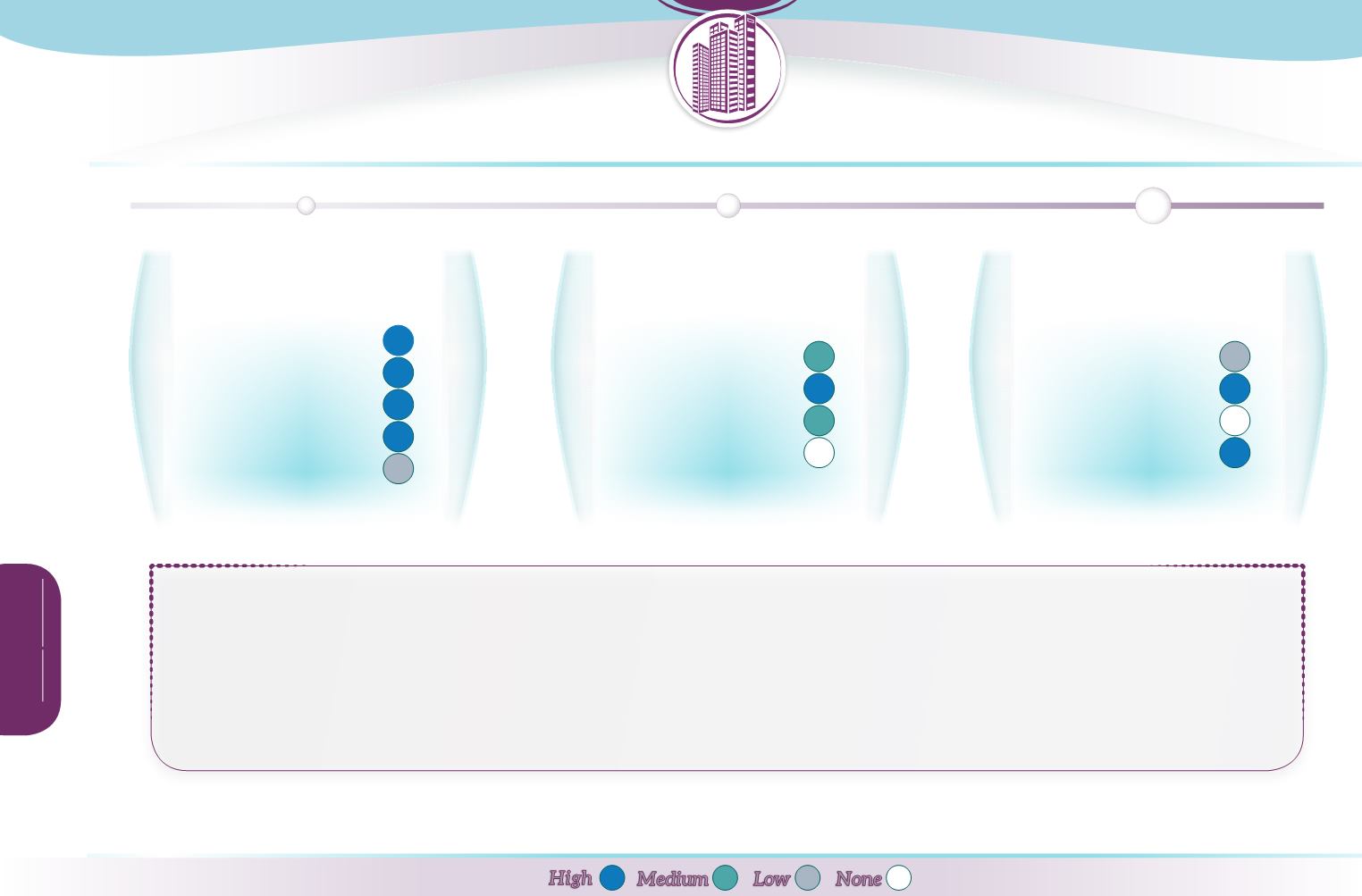
E
cosystem
servicesdelivered
Provisioning
Regulation & maintenance
Cultural
Abiotic
C
ontribution
topolicyobjectives
Water Framework Directive
Floods Directive
Birds & Habitats Directive
2020 Biodiversity Strategy
P
otential
biophysicaleffects
Runoff
Reducing pollution
Soil conservation
Habitat
Climate Change
High
Low
Medium
None
Retention ponds reduce peak runoff through
storage
and
controlled outflow release
(although as they do not infiltrate runoff they therefore provide little total volume
reduction). Typically, they will be designed for events up to the 1 in 30 year storm. Ponds can reduce the risk of surface
flooding
in conjunction with other SuDS features,
which contributes to climate change adaptation.
Retention ponds can be effective at
pollutant removal
; effectiveness will be improved by good design and maintenance and increased residence time. They are also highly
effective at intercepting
sediment
. Through reducing diffuse pollution, retention ponds play a role in preserving and improving surface
water quality
.
Creation of ponds will create new
aquatic and riparian habitat
, therefore increasing natural biomass production and contributing to biodiversity preservation. Increased
application of retention ponds may also contribute to meeting the objectives of the 2020 Biodiversity Strategy through the use of green infrastructures.Where used as rural SuDS
components, retention ponds can contribute to more sustainable agricultural practices. Ponds also increase the aesthetic/cultural value of the landscape.


